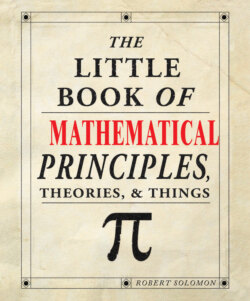Читать книгу The Little Book of Mathematical Principles, Theories & Things - Robert Solomon - Страница 20
На сайте Литреса книга снята с продажи.
5th century BC Greece Doubling the Cube
ОглавлениеGiven a cube, construct a cube with exactly twice its volume.
_______________
The problem of doubling the cube is equivalent to constructing a line with a certain length, using straight edge and compasses only.
In ancient times, the island of Delos in the Aegean Sea was troubled by a plague. When the people consulted an oracle, it told them that the fault lay in the altar to Apollo which was shaped like a cube. The god was offended because it was too small and it should be made twice as large.
The Delians reconstructed the altar, doubling its height, width, and depth, but the plague continued unabated. A new appeal to the oracle revealed the reason for this: the altar was now too large.
Suppose the side of the original cube was 1 unit. As all three dimensions had been doubled, they were each 2 units. The volume of the altar was now 2 x 2 x 2 = 8 times the original volume. The god Apollo wanted the volume of the altar, not its sides, to be twice as large.
Suppose each side becomes k units. Then the volume of the altar is k x k x k, which is k3. If the volume is now doubled, then k3 = 2. Therefore, k itself must be 3√2, the cube root of 2.
The problem now becomes the following: given a length of one unit, construct a length of 3√2 units. Greek mathematicians (and Greek gods, presumably) were very particular about exactness. The Greeks tried all kinds of ingenious methods to construct this length, but all of the methods used something other than straight edge and compasses. It would be many years before the answer to this conundrum was finally found.
See: Doubling the Cube and Trisecting the Angle Revisited, page 118
